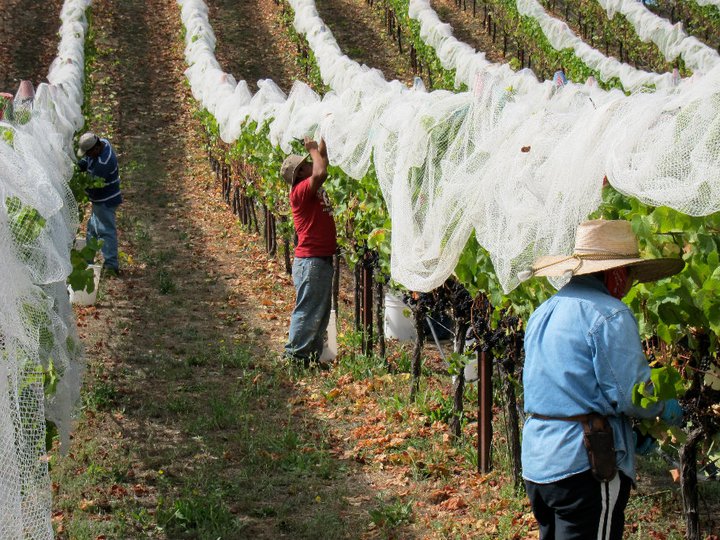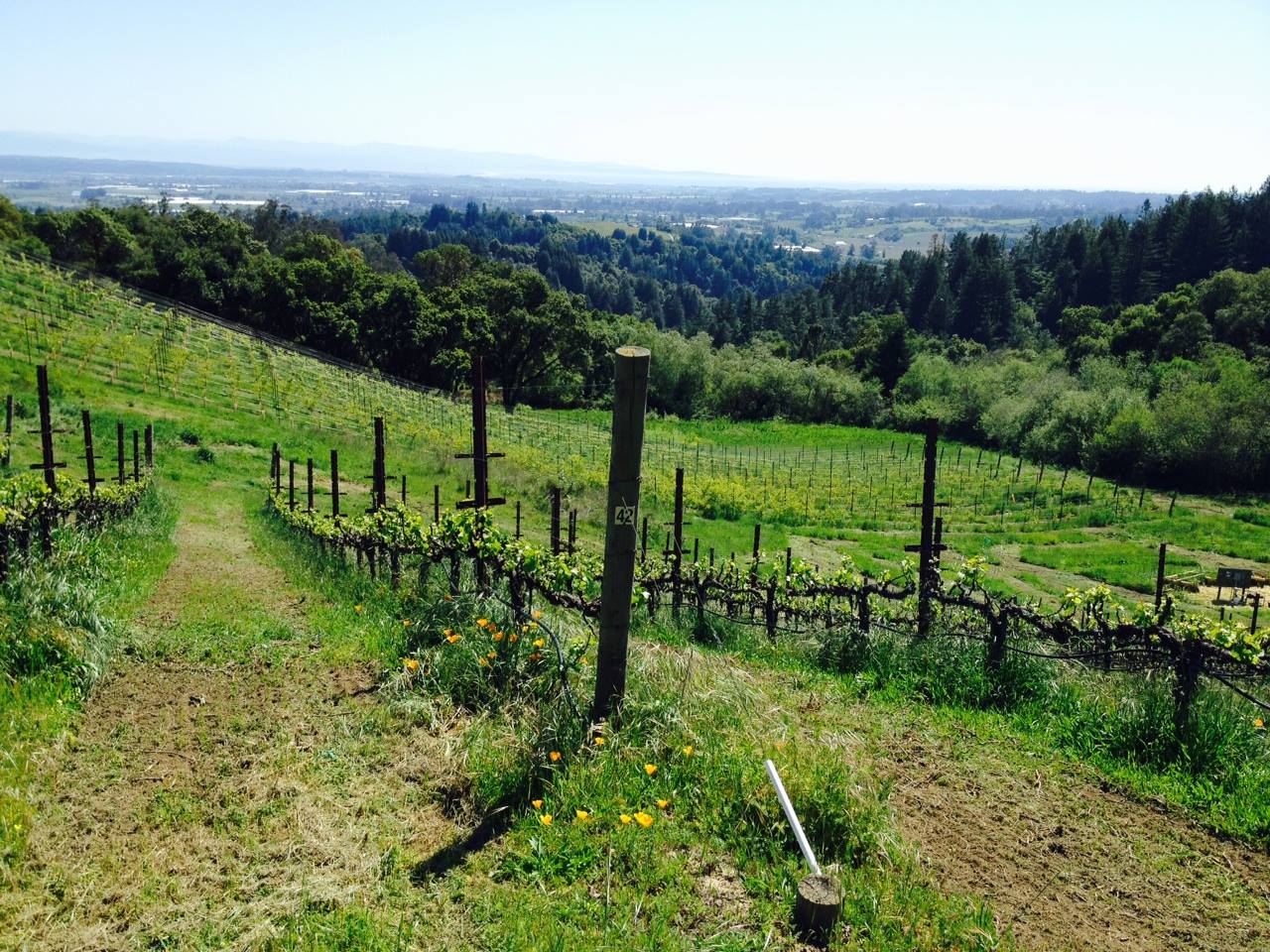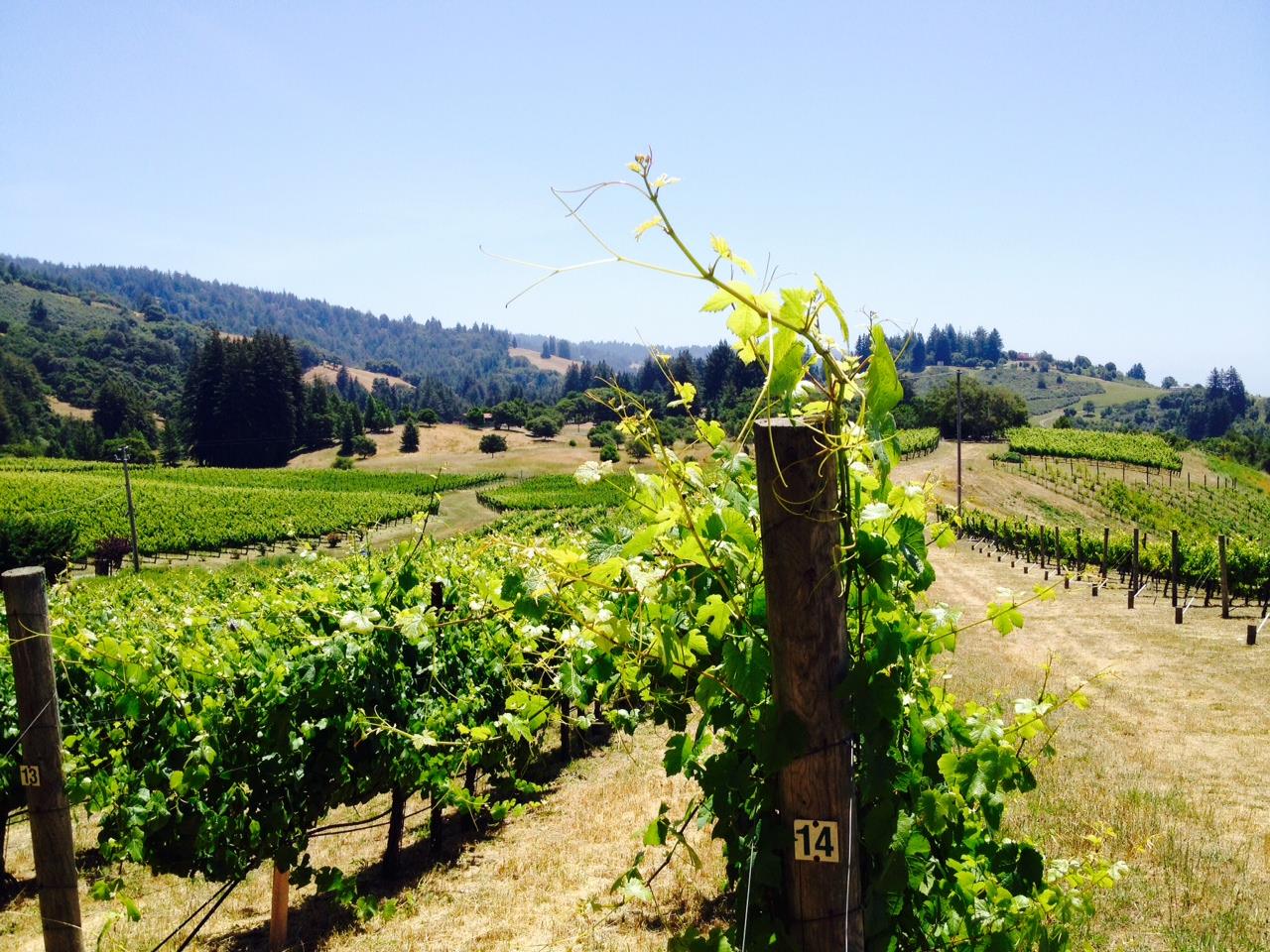The Windy Oaks Approach to Farming
Our goal in the vineyard is to maximize the expression of terroir through maximum quality grapes. We achieve this goal through a mix of traditional practices, proprietary management practices, and selective use of technology. Windy Oaks Estate vineyard uses a VSP bilateral cordon system, with three double foliage wires, to provide maximum light and airflow for the grapes during their all-important growing season, from March through October. We personally work on and/or closely supervise the training, pruning, summer maintenance, and harvesting of the grapes. Our goal is to achieve the expression of terroir through healthy grapes that have had substantial exposure to light and air, with maximum hang time to ensure optimum flavor and complexity.
The growing of premium grapes is a constant struggle between ensuring healthy growth, yet not so lush that the leaves and unwelcome growth overshadow the grapes. This struggle is what defines many of the activities carried out during the year. In recent years, we have introduced some innovative practices in the vineyard, such as the use of a hot-air machine to minimize the need for chemical sprays and to control undesirable insects. We have also experimented with and introduced new canopy management practices to ensure maximum quality and allow us to adapt to more volatile weather variation. The following seasonal outline highlights the Windy Oaks Estate vineyard activities.
Winter/Early Spring
Pruning typically begins in February and lasts through early April. Good pruning is critical to the vines, as this is what determines the spur position to ensure proper growth and spacing of the shoots for that year. We have developed a proprietary pruning approach that involves three separate passes through the vineyard over a two-month period. We have found that this helps ensure even fruit-set and crop load. Bud break usually appears in early March. Removal of suckers (those growths below the cordon wire) starts shortly after this and continues throughout the growing season. This is important as it ensures that this unwanted growth does not detract from the growth of the spurs above the cordon wire.
Late Spring
Sunshine and fog: sunny daytime temperatures in the low 70s, and at night the coastal fog rolls in and the temp is usually in the low 50s. In most years, there will be very little or no rain from now until November. In April and May, the vigorously growing spurs are monitored to ensure that only two shoots extend from each spur. This process ensures that the growing grapevines will have ideal exposure to light and air. To prevent mildew during this all-important growing season, we spray the vines every couple of weeks with stylet oil (an organic product) or similar products. These low-impact products are applied with a specialized venturi sprayer. Since introducing our revolutionary hot air technology, we have been able to reduce our conventional sprays by 50% and achieve excellent insect control. When the cordon spurs reach about 18 inches, we begin to tuck them in the appropriate wires. During this time, we usually weed-whack in the vine rows to control in-row weed growth and mow our permanent cover crop between rows.
Summer
By late June, the canopy is fully extended up the wires and leaf-thinning begins. A group of trained workers goes through the entire vineyard and pulls leaves around the clusters inside the canopy. Again, the purpose of this is to ensure ideal exposure to light and air. As the shoots grow beyond the top canopy wire, instead of hedging the vines (which is normal practice), we wrap the growing shoots around the top canopy wires. This prevents the side shoots that normally result from hedging and improves light and air penetration in the canopy.
In early August, near veraison, the vines are netted. Although it is an arduous and expensive process, and it covers the vines at their prettiest time of the year, netting is crucial to protect the maturing grapes from birds. The nets are left on until harvest. After netting, the ripening grapes are carefully monitored.
Autumn
Beginning in early September, we start to sample the sugar content (Brix), acidity, and pH of the grapes. While we regularly check these numbers, our key indicator of ripeness is the physiological ripeness of the grapes, particularly skins, seeds, and stems.
Depending on autumn warmth, harvest occurs at the estate vineyard any time between early and late October. Our vineyards in Chalone and Santa Lucia Highlands are always the first to ripen, and the earlier ripening sections of our Corralitos vineyard soon follow. Typically, the chardonnay grapes ripen in the middle of our pinot ripening, and they are picked and processed in one day. Our estate syrah grapes always ripen last, and we typically harvest them in mid-November. We harvest each section of the vineyards separately and keep them separate in bins and barrels. We typically get the last wine in a barrel around mid-December
Also, throughout the year, Jim visits our vineyards in Monterey County: Santa Lucia Highlands, Chalone, and Arroyo Seco, and provides input on canopy management practices, irrigation, disease and pest control, and vineyard floor management. As the grapes begin to ripen, and we get closer to harvest, Jim visits the vineyards frequently to assess grape ripening and to determine the ideal harvest time.



